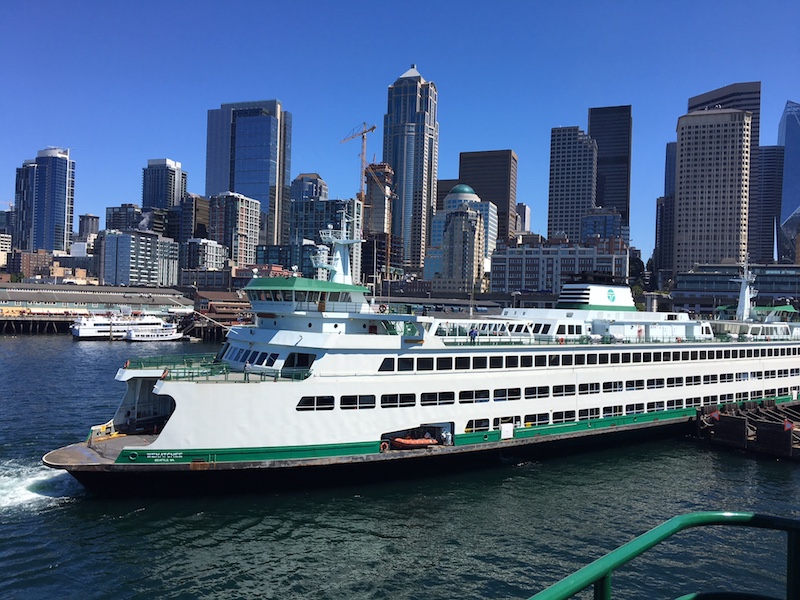Washington state, which runs the largest ferry service in North America, last week announced a second initiative to make its ferries greener and cleaner. Using $35 million from the nationwide Volkswagen federal emissions settlement, Washington State Ferries (WSF) will begin converting three of its Jumbo Mark II ferries from diesel to hybrid electric propulsion.
This initiative follows the September launch of a contract with Seattle-based Vigor to build five new 144-car Olympic-class hybrid electric ferries for the state. The first of the new ferries has an anticipated delivery date of late 2022.
Siemens, known for successfully repowering vessels in Europe, will do the propulsion system upgrade design for the three Jumbo Mark II-class vessels. Design for the first conversion will begin this month, with construction beginning in 2021.
“It will be a race to see which gets done first, the new build or the conversion,” Ian Sterling. WSF’s communications director, told WorkBoat. “But sometime in the next two to three years, people in Washington state will be able to ride on a ferry that is capable of running just on electricity.”
“Converting the biggest, dirtiest ferries in the fleet is a huge milestone in our efforts to decarbonize the state and fulfill our obligation to help defeat climate change,” Washington Gov. Jay Inslee said in a written statement. “In addition to reducing emissions, moving to an all-electric ferry fleet will save taxpayers money on ferry operating costs, virtually eliminate engine noise and vibration that can hurt orca whales, and improve reliability of service.”
Constructed in the 1990s, the Jumbo Mark II-class ferries are due for their midlife propulsion system replacements, making for easy upgrades with minimal service disruptions, the ferry service said. The ferries carry 202 cars and 1,800 passengers each and primarily operate on the Seattle/Bainbridge and Edmonds/Kingston routes.
In addition reduced maintenance costs, converting the Jumbo Mark IIs will reduce carbon dioxide emissions by 48,565 metric tons per year – the equivalent of taking more than 10,000 cars off the road, according to WSF. Hybrid ferries will also cut the emissions of nitrogen oxide, a toxic form of air pollution, by 184.5 metric tons per year once all three ferries are operating with hybrid electric propulsion.




